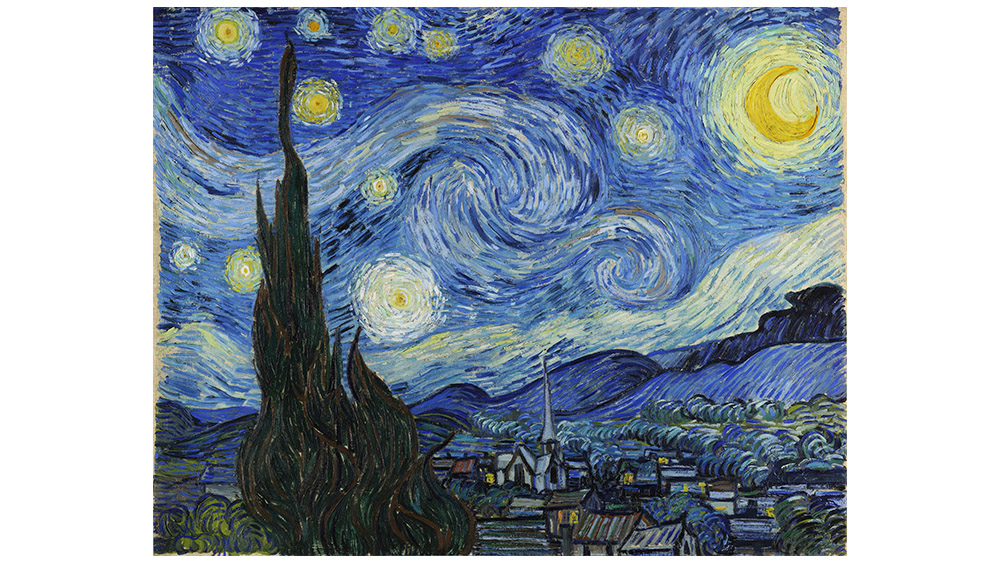Vincent Van Gogh's Starry Night is one of the Dutch post-Impressionist's best-known masterpieces, famous for its dreamy swirling evocation of the landscape he saw from the window of an asylum in Saint-Rémy-de-Provence. But it turns out that the artist's flowing strokes depict some fascinating science too.
Researchers from China and France have analysed the brushstrokes and found that they unintentionally depict complex fluid dynamics. They measured the sizes of whirls/eddies in the painting and their relative distances and intensity and found that they following the mathematical principles of turbulence (see our pick of the best art supplies for your own work).

Published in Physics of Fluids, the study found that the patterns in the painting correspond with the Soviet mathematician Andrey Kolmogorov’s theory of turbulence, a set of hypotheses on how energy moves between between large and small scales in gases and liquids. Kolmogorov's theory was formulated in 1941, more than 50 years after Van Gogh painted Starry Night.
The researchers found that "a –1-like power-law persists in the spectrum below the scales of the smallest whirls, hinting at Batchelor-type scalar turbulence with a high Schmidt number". Basically, the patterns show several layers of complex behavior.
The conclusion is that although we consider Van Gogh's style to be impressionistic, his work actually shows a canny scientific insight into how energy behaves in systems, like the Earth’s atmosphere. While that appears to be accidental, it could show that the painter had a certain intuition about the essence of natural phenomena, sensing environmental forces at work. Inspired to go out and paint the elements? Check out our guide to the best oil paints.
Daily design news, reviews, how-tos and more, as picked by the editors.

Joe is a regular freelance journalist and editor at Creative Bloq. He writes news, features and buying guides and keeps track of the best equipment and software for creatives, from video editing programs to monitors and accessories. A veteran news writer and photographer, he now works as a project manager at the London and Buenos Aires-based design, production and branding agency Hermana Creatives. There he manages a team of designers, photographers and video editors who specialise in producing visual content and design assets for the hospitality sector. He also dances Argentine tango.
